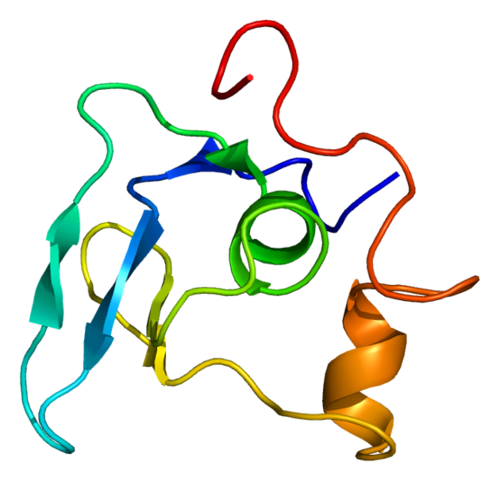Marfan Syndrome;

What is Marfan Syndrome?
Marfan Syndrome is a genetic connective tissue disorder characterized by abnormalities in various parts of the body, including the heart, blood vessels, bones, and eyes. It affects the body’s ability to produce a strong and supportive protein called fibrillin-1, which results in weakened connective tissues throughout the body.
Cause of Marfan Syndrome:
Marfan Syndrome is caused by mutations in the FBN1 gene, which provides instructions for making fibrillin-1. These mutations lead to the production of defective fibrillin-1 or insufficient quantities of the protein, affecting the structural integrity of connective tissues.
Genetic Mutation in FBN1 Gene:
Marfan Syndrome is primarily caused by mutations in the FBN1 gene. This gene provides instructions for making fibrillin-1, a crucial protein in connective tissues. Mutations in FBN1 can result in the production of abnormal or insufficient fibrillin-1, leading to weakened connective tissues throughout the body.
Autosomal Dominant Inheritance:
Most cases of Marfan Syndrome are inherited in an autosomal dominant pattern. This means that a mutation in one copy of the FBN1 gene is sufficient to cause the condition. Individuals with Marfan Syndrome have a 50% chance of passing the mutated gene to each of their children.
Sporadic Mutations:
While Marfan Syndrome is typically inherited, some cases may occur sporadically due to new mutations in the FBN1 gene. These mutations can occur in individuals with no family history of the condition.
Variability in Mutation Effects:
The effects of FBN1 mutations can vary widely among individuals with Marfan Syndrome. Some mutations may result in more severe symptoms and complications, while others may cause milder manifestations of the condition. This variability can make the diagnosis and management of Marfan Syndrome challenging.
Signs and Symptoms of marfan syndrome:
- Skeletal Abnormalities: Individuals with Marfan Syndrome often have long limbs, fingers, and toes. They may also have a disproportionately long and narrow face, a high-arched palate, and a curved spine (scoliosis).
- Cardiovascular Manifestations: Marfan Syndrome commonly affects the heart and blood vessels, leading to conditions such as aortic aneurysms (enlargement of the aorta), mitral valve prolapse, and aortic dissection (tear in the inner layer of the aorta).
- Ocular Features: Eye abnormalities, including myopia (nearsightedness), dislocated lenses, and a detached retina, are frequently observed in individuals with Marfan Syndrome.
- Pulmonary Involvement: Some individuals with Marfan Syndrome may experience respiratory complications, such as spontaneous pneumothorax (collapsed lung) or sleep apnea.
Read Another Article: Hypertensive Emergency Treatment
System Involvements:
Marfan Syndrome can affect multiple organ systems, including the skeletal, cardiovascular, ocular, and pulmonary systems. The systemic nature of the disorder necessitates comprehensive medical evaluation and management by a multidisciplinary team of healthcare providers.
Diagnosis of marfan syndrome:
Diagnosing Marfan Syndrome typically involves a thorough clinical evaluation, including a review of medical history, physical examination, and specialized tests. Diagnostic criteria established by the Ghent nosology take into account various clinical features, family history, and molecular genetic testing to confirm the diagnosis.
Complications of Marfan Syndrome:
- Cardiovascular Complications
- Aortic Aneurysm and Dissection
- Mitral Valve Prolapse
- Aortic Regurgitation
- Aortic Valve Disruption
- Arrhythmias
- Ocular Complications
- Ectopia Lentis
- Myopia
- Retinal Detachment
- Glaucoma
- Skeletal Complications
- Scoliosis
- Kyphosis
- Pectus Excavatum
- Joint Hypermobility
- Long Limbs
- Pulmonary Complications
- Pneumothorax
- Sleep Apnea
- Central Nervous System Complications
- Dural Ectasia
- Herniation of the Brainstem
- Developmental Delays
- Gastrointestinal Complications
- Hiatal Hernia
- Gastroesophageal Reflux Disease (GERD)
- Skin Complications
- Stretch Marks (Striae)
- Easy Bruising
- Thin, Translucent Skin
- Psychological Complications
- Anxiety Disorders
- Depression
- Social Isolation
These complications can vary in severity among individuals with Marfan Syndrome and may require specialized medical management to address associated health risks. Regular monitoring and early intervention are essential for reducing the impact of these complications on overall health and quality of life.
Treatment:
Management of Marfan Syndrome focuses on symptom relief, prevention of complications, and improving overall quality of life. Treatment strategies may include medications to reduce blood pressure and prevent aortic enlargement, regular monitoring of cardiovascular health, surgical interventions to repair or replace damaged heart valves or aortic segments, orthopedic interventions for skeletal abnormalities, and ophthalmologic interventions for eye-related issues.
Differential Diagnosis:
- Ehlers-Danlos Syndrome (EDS):
- EDS is a group of connective tissue disorders characterized by joint hypermobility, skin hyperextensibility, and tissue fragility.
- Differential diagnosis with Marfan Syndrome includes assessing for the absence of specific features such as aortic root dilation and ectopia lentis, which are characteristic of Marfan Syndrome but not typically seen in EDS.
- Loeys-Dietz Syndrome (LDS):
- LDS is a genetic disorder that shares some clinical features with Marfan Syndrome, including aortic aneurysms and skeletal abnormalities.
- Differential diagnosis involves genetic testing to distinguish between Marfan Syndrome and LDS, as they result from mutations in different genes (FBN1 for Marfan Syndrome and TGFBR1/TGFBR2 for LDS).
- Homocystinuria:
- Homocystinuria is an inherited metabolic disorder characterized by elevated levels of homocysteine in the blood.
- Differential diagnosis includes assessing for features such as ectopia lentis, skeletal abnormalities, and cardiovascular complications, which overlap with those seen in Marfan Syndrome. Genetic testing and metabolic screening help differentiate between the two conditions.
- Beals Syndrome (Congenital Contractural Arachnodactyly):
- Beals Syndrome is a rare genetic disorder that shares some clinical features with Marfan Syndrome, such as joint contractures and long, slender fingers.
- Differential diagnosis involves evaluating for distinctive features such as craniofacial abnormalities and lack of ectopia lentis, which are characteristic of Beals Syndrome but not typically seen in Marfan Syndrome.
- Larsen Syndrome:
- Larsen Syndrome is a rare genetic disorder characterized by multiple joint dislocations and abnormalities of the spine and hands.
- Differential diagnosis with Marfan Syndrome involves assessing for the absence of features such as aortic root dilation and ectopia lentis, which are not typically associated with Larsen Syndrome.
- Mass Syndrome:
- MASS Syndrome (Mitral valve prolapse, Aortic enlargement, Skin and Skeletal findings) shares some clinical features with Marfan Syndrome, including mitral valve prolapse and skeletal abnormalities.
- Differential diagnosis includes genetic testing to differentiate between the two conditions, as MASS Syndrome does not typically involve ocular manifestations such as ectopia lentis seen in Marfan Syndrome.
- Shprintzen-Goldberg Syndrome (SGS):
- SGS is a rare genetic disorder characterized by craniosynostosis, craniofacial abnormalities, and cardiovascular anomalies.
- Differential diagnosis involves assessing for features such as craniosynostosis and distinctive facial features, which are not typically seen in Marfan Syndrome. Genetic testing helps confirm the diagnosis.
- Other Connective Tissue Disorders:
- Various other connective tissue disorders, such as Stickler Syndrome, Cutis Laxa, and Osteogenesis Imperfecta, may present with features overlapping those of Marfan Syndrome.
- Differential diagnosis involves thorough clinical evaluation, genetic testing, and consideration of specific clinical criteria to differentiate between these conditions.
In conclusion, Marfan Syndrome is a complex genetic disorder with multisystem involvement, affecting various aspects of an individual’s health and well-being. Early recognition, comprehensive evaluation, and proactive management are crucial for optimizing outcomes and minimizing the risk of complications in individuals with Marfan Syndrome. Continued research efforts aimed at elucidating the underlying molecular mechanisms and advancing therapeutic strategies are essential for improving the diagnosis, management, and prognosis of this challenging condition.


Pingback: Home - ECG Oxford
Pingback: common health conditions - MedTimes